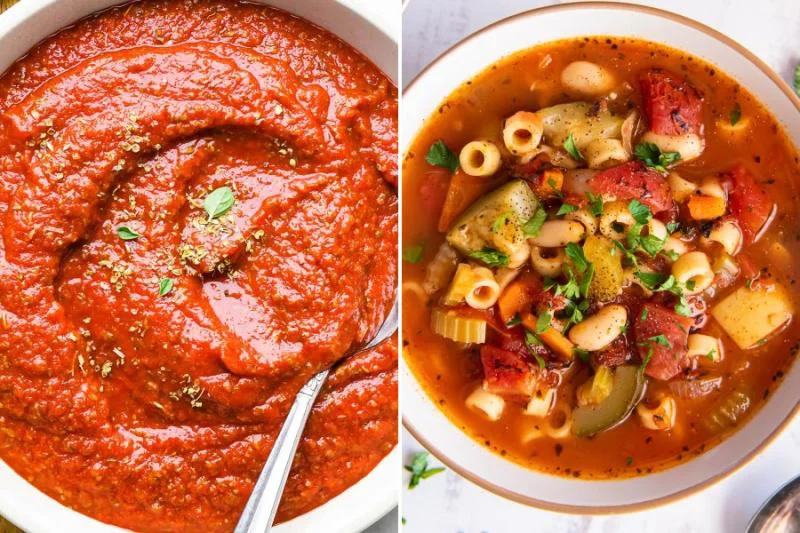Soup is a complete meal, whereas sauce is typically used to flavour or accompany other foods. Soup is a primarily liquid dish made by simmering vegetables, meat, poultry, fish, grains, and legumes in water or broth. In contrast, the sauce is a liquid or semi-liquid condiment used to enhance other foods’ flavour and texture.
What is Soup?
Soup is a type of hot food that consists of a liquid broth or stock flavoured with various ingredients such as vegetables, meat, fish, grains, and spices. It is a versatile and comforting food that people from all over the world enjoy. Soup is made up of a liquid base and ingredients that are added for flavour and texture. The liquid base can be made from various ingredients, including meat or vegetable stock, water, or milk. Ingredients can be added to the base to make a variety of soups, such as creamy soups, clear broths, chunky stews, and pureed blends.
Soup is frequently regarded as a healthy and nutritious meal option because it contains vitamins, minerals, and fibre from the addition of vegetables, grains, and proteins. Soups can be served as a main course or a side dish and are frequently served with bread or crackers. They can be eaten all year, but they are especially popular as a warming and comforting food during the colder months. It’s also a great way to use leftovers or make a meal from pantry staples.
What is Sauce?
A sauce is a liquid or semi-liquid concoction of ingredients used to improve food’s flavour, texture, and appearance. Sauces can be made with a wide range of ingredients, such as herbs, spices, fruits, vegetables, meats, and dairy products, and their consistency can range from thin and pourable to thick and creamy. Sauces can be used as a dip for vegetables or chips, a topping for meats or pasta, or a base for soups and stews. They can also add moisture and flavour to otherwise dry or bland dishes.
Making sauce necessitates paying close attention to the ingredients and the cooking process and a solid understanding of flavour profiles and techniques like emulsification and reduction. Tomato sauce, barbecue sauce, soy sauce, Alfredo sauce, and gravy are some of the most common sauces. Each sauce has its distinct flavour and texture and can be used to complement a wide range of dishes. While some sauces are quick and simple, others may require hours of simmering and reduction to achieve the desired texture and flavour.
In addition to traditional sauces, many new and innovative sauces are constantly being developed, utilising ingredients and techniques worldwide. Sauces, whether homemade or purchased, can add depth and complexity to dishes and are integral to many different cuisines and cultures worldwide.
Difference Between Soup and Sauce
Soup and sauce are liquid-based foods, but their ingredients, preparation methods, and applications differ. Soup is a liquid-based dish made by simmering vegetables, meat, poultry, fish, grains, and legumes in water or broth. Soups can be served hot or cold in various styles, including creamy, chunky, and clear. Soups are frequently served as a main course and can be filling and nutritious.
In contrast, the sauce is a liquid or semi-liquid condiment used to enhance the flavour and texture of other foods. Sauces can be made with a wide range of ingredients such as vegetables, fruits, herbs, spices, dairy, and/or meat. Sauces, thicker than soup, are used to flavour meats, vegetables, pasta, and other dishes. Another distinction between soup and sauce is the method of preparation. Soup is typically made by simmering ingredients in a pot or slow cooker for an extended period of time to allow the flavours to meld. On the other hand, sautéing or pureeing ingredients are frequently prepared and then simmer for a shorter period.
And normally, soup is a complete meal that can be eaten on its own, whereas sauce is typically used to flavour or accompany other foods. Soup is more filling and nutritious than sauce, which is used to enhance the flavour of different dishes.







